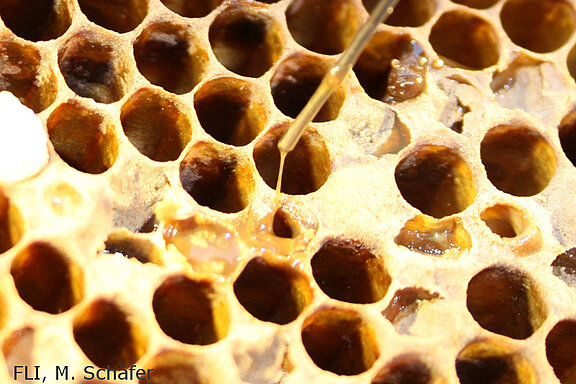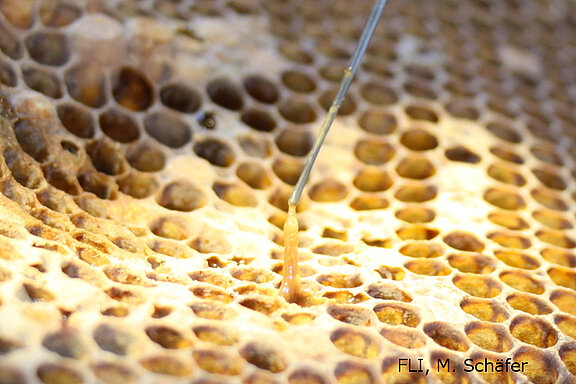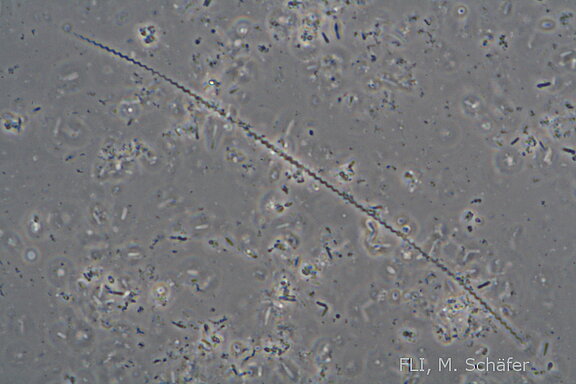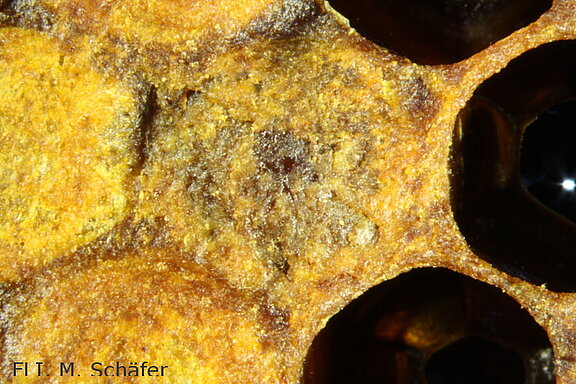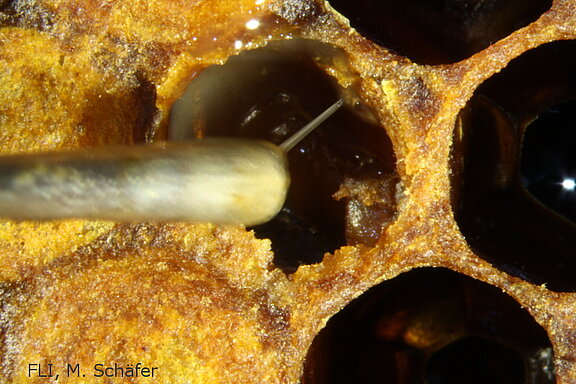American foulbrood
Paenibacillus larvae kills the majority of larvae either before the capping of the brood cells. Nevertheless, depending on the ERIC genotype there are significant differences. In case of infection with Paenibacillus larvae ERIC II almost all bee larvae die before cell capping and are removed by nurse bees, which causes a spotty brood pattern. If the larvae die after capping, the nurse bees usually will not notice it (mostly in case of infection with ERIC I) and Paenibacillus larvae will decompose the bee larvae within the brood cells. Cell capping’s then often appear sunken or have holes, as the larvae transform to a pasty, coffee-brown, semi-fluid glue-like colloid usually known as ropy mass (matchstick test). This viscous mass then attaches to the cell wall, dries out and forms a hard scale that is hard to remove. Depending on the infection dose and the genotype, the incubation period ranges between a few weeks and several months. Furthermore, the condition of the bee colony and the hygienic behaviour of the bees play an important role.


